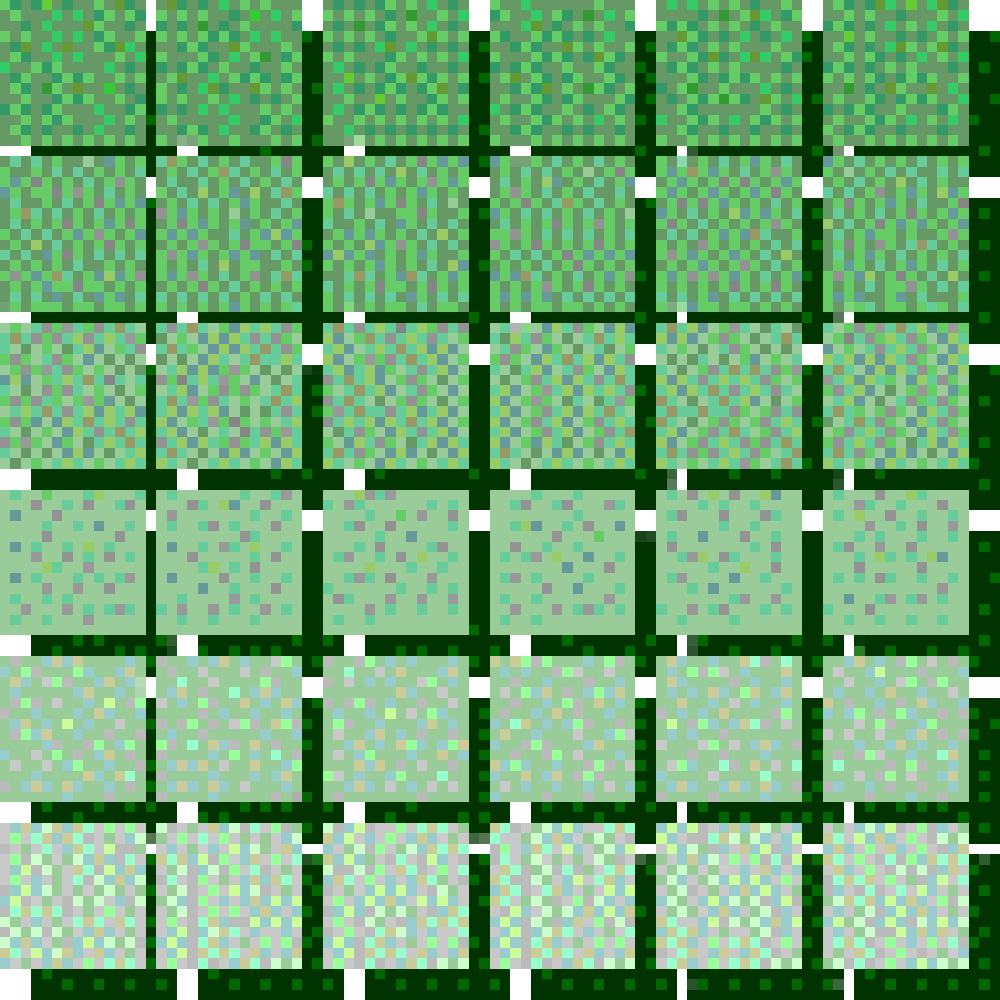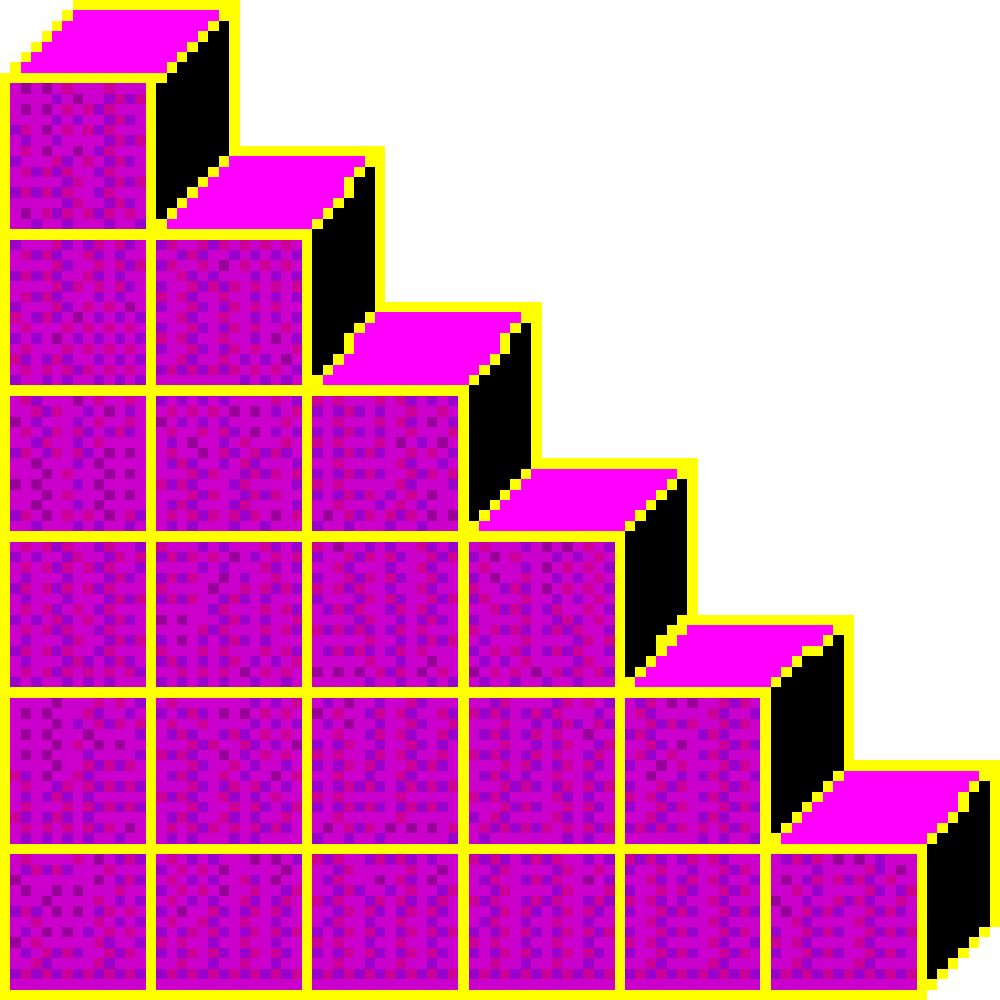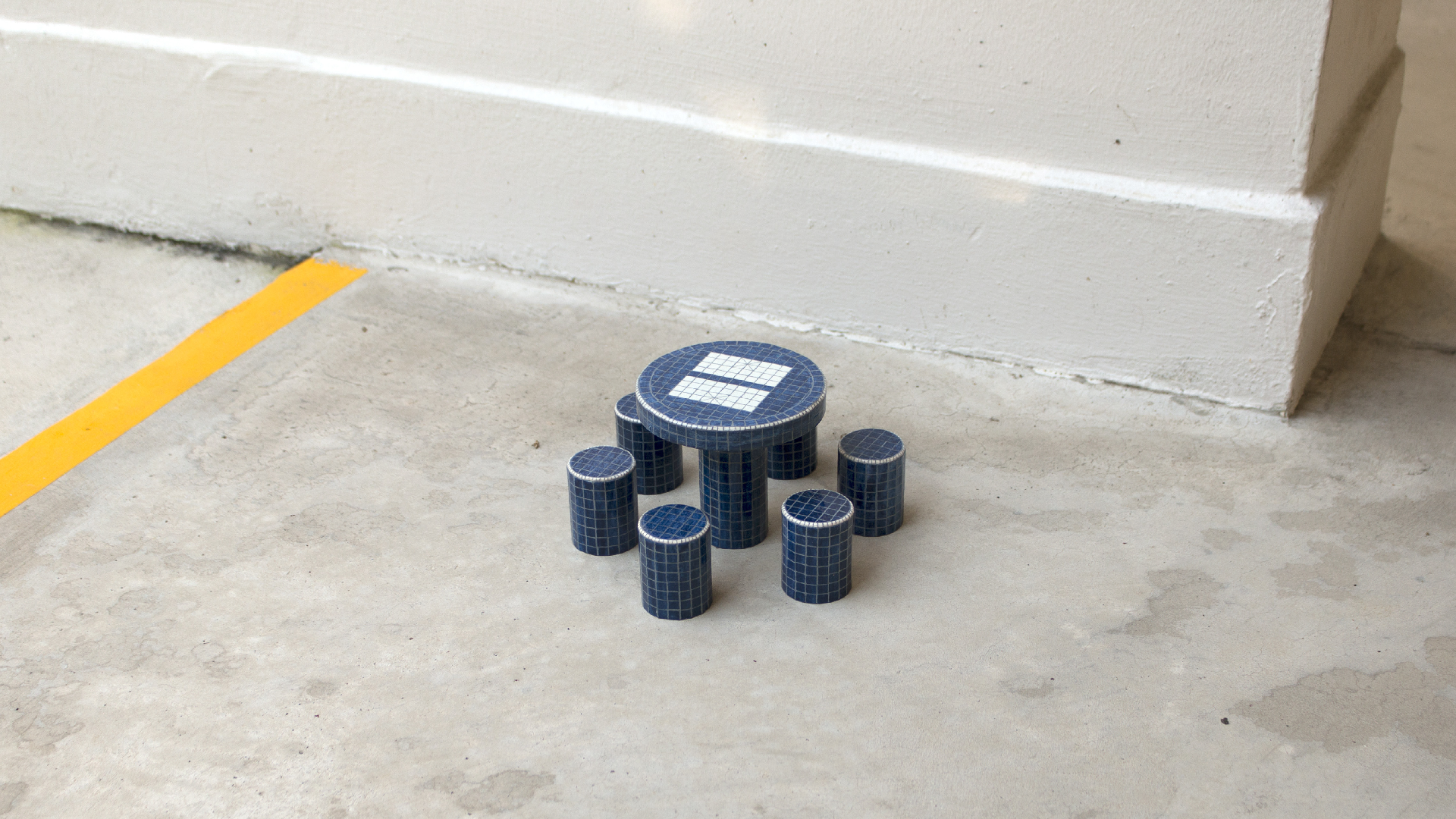



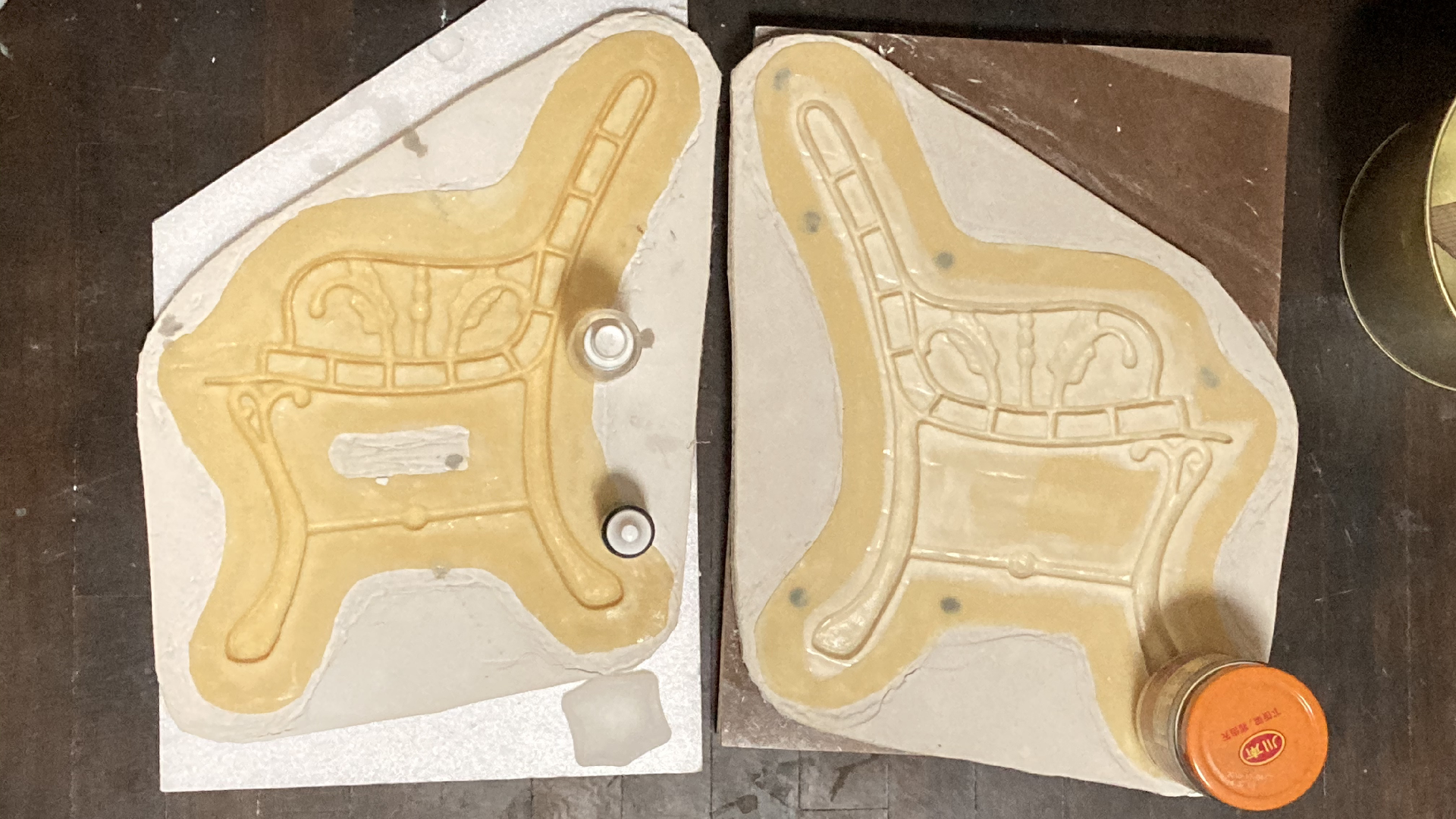
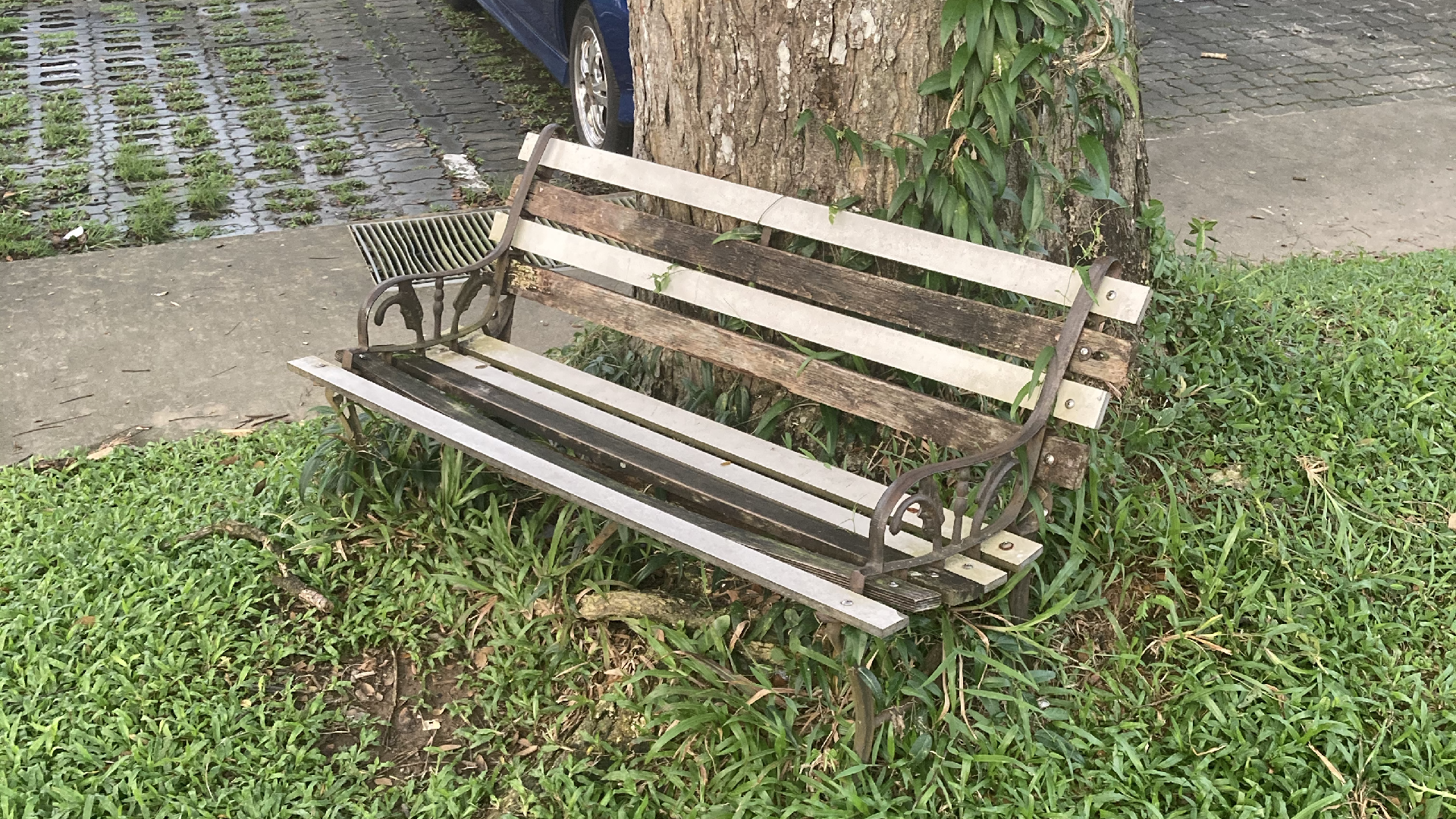
Title
Twice as Far Away (Blue Tile Table)
Year
2021
Medium
Cardboard, PVC, acrylic paint, concrete
Dimensions
100 x 100 x 40 cm
Title
Twice as Far Away (Iron-and-Wood Park Benches)
Year
2021
Medium
Painted cast resin, stained wood
Dimensions
60 x 25 x 30 cm each
Twice as Far Away (Blue Tile Table)
Year
2021
Medium
Cardboard, PVC, acrylic paint, concrete
Dimensions
100 x 100 x 40 cm
Title
Twice as Far Away (Iron-and-Wood Park Benches)
Year
2021
Medium
Painted cast resin, stained wood
Dimensions
60 x 25 x 30 cm each
These two works are the latest in a series of sculptures based on public furniture. One is a set comprising a table and six seats, covered in blue tiles except for a white-tiled chessboard design on the table’s surface. The other is a pair of benches with wooden seats, supported by wrought iron frames featuring botanical motifs. Both are common sights in Singapore; part of the vernacular of local public housing estates and parks.
Here, these handmade replicas appear to have been faithfully, almost obsessively reproduced, save for the fact that they have been made at half the size of their real-life counterparts. The adjustment of a single element—their scale—has altered these recognisable objects’ function and context, shifting them into a space just bordering on the absurd. Positioned in the vicinity of the exhibition space’s actual fire hose reel, itself a fixture in public spaces, the sculptures humorously flicker between reality and illusion, nudging the viewer to reassess the otherwise familiar.
Here, these handmade replicas appear to have been faithfully, almost obsessively reproduced, save for the fact that they have been made at half the size of their real-life counterparts. The adjustment of a single element—their scale—has altered these recognisable objects’ function and context, shifting them into a space just bordering on the absurd. Positioned in the vicinity of the exhibition space’s actual fire hose reel, itself a fixture in public spaces, the sculptures humorously flicker between reality and illusion, nudging the viewer to reassess the otherwise familiar.
Interview with the artist
Q Curators
Your practice is built around the examination of everyday objects, or otherwise inconspicuous aspects of our daily lives. What is it that you find so fascinating about them?
What, to you, is the effect (or affect) of reducing scale in the copies that you make of public ‘furniture’?
Across your projects, you have constantly engaged with the act of replication. How did you come to develop this methodology, and why have you found yourself returning to it again and again?
To me, the questions of scale, replication, and the everyday are intertwined.
In my sculpture, I’ve always liked making maquettes (scale models). They help me visualise what my work will look like, and let me run myself through the fabrication process before I commit to working on a larger scale. Even before I was conscious of replication as a method, my work had always involved it to some degree—the final work being a scaled-up replica of its own model.
As I was learning more about conceptual art, I found it increasingly difficult to justify making things, and making things at that ‘larger scale’. If the ‘idea’ is the point, why spend weeks making something when you could describe it in words, or save your precious time on Earth for something more important? What is the difference between, say, seeing the words, “curtain made of needles”, versus an actual curtain made of needles, or a drawing of a curtain made of needles? What was gained by making a model ‘life-sized’—when clearly the maquette communicated everything that was essential to the ‘idea’? With a bit of trick photography you could even make a maquette look life-sized for your Instagram.
I first approached this ‘scaling-down-of’ process through thinking about functionality—if I take this outdoor trash can and make it smaller it becomes more like an indoor trash can; if I take this bench and make it smaller it becomes a bench for cats, etc. I thought of it as a means to take recognisable entities and allow them to exist in a different context, to be used and interacted with differently, in ways that are both familiar and not. I tried to be as accurate as possible in the copies such that the size of it would be what broke the illusion of realness, to reveal the ‘made-ness’ of the readymade. After making these sculptures, it became obvious that I’d also answered my question of why you can’t just stop at the maquette.
Right now, I still can’t fully explain why I’ve been using public furniture as a subject except that I like them. I like how specific they are—how recognisable they can be to some people when they can be completely foreign to others. I like how anonymous they are, in the way that vernacular design sometimes is. I even like them purely because they let me sit down.
For the blue tile table in particular, I like how simple it is. At its most basic, it is just two different colours applied to two different shapes of tiles. I enjoy how the structural element of the tile-grid has been dragged into doing double duty, by also producing the chessboard patterns.
I have also explored replication and scale in other mediums. While I was developing my sculptural practice, I was simultaneously learning screen printing—an industrial printing process that was most famously co-opted by Andy Warhol as an artistic technique. Although print allows for the repetition of the same image, such that you can’t differentiate the ‘original’ from its ‘copies’, the medium actually made me more aware that all readymades had been ‘made’ once. The printed pattern on some old fabric I’d found had been designed and put there by someone, and when I printed patterns on fabric, I was potentially becoming that someone for someone else. Printing also made me think differently about scale. Since a lot of my file preparation was done digitally, it was never a given what size my images would be. It is so easy to change the size of something on a computer, and so difficult literally anywhere else.
Ultimately, as someone whose primary mode of transporting work has often been a public bus, a ‘small and flat’ practice—in both sculpture and print—has always felt extremely appealing.
In my sculpture, I’ve always liked making maquettes (scale models). They help me visualise what my work will look like, and let me run myself through the fabrication process before I commit to working on a larger scale. Even before I was conscious of replication as a method, my work had always involved it to some degree—the final work being a scaled-up replica of its own model.
As I was learning more about conceptual art, I found it increasingly difficult to justify making things, and making things at that ‘larger scale’. If the ‘idea’ is the point, why spend weeks making something when you could describe it in words, or save your precious time on Earth for something more important? What is the difference between, say, seeing the words, “curtain made of needles”, versus an actual curtain made of needles, or a drawing of a curtain made of needles? What was gained by making a model ‘life-sized’—when clearly the maquette communicated everything that was essential to the ‘idea’? With a bit of trick photography you could even make a maquette look life-sized for your Instagram.
I first approached this ‘scaling-down-of’ process through thinking about functionality—if I take this outdoor trash can and make it smaller it becomes more like an indoor trash can; if I take this bench and make it smaller it becomes a bench for cats, etc. I thought of it as a means to take recognisable entities and allow them to exist in a different context, to be used and interacted with differently, in ways that are both familiar and not. I tried to be as accurate as possible in the copies such that the size of it would be what broke the illusion of realness, to reveal the ‘made-ness’ of the readymade. After making these sculptures, it became obvious that I’d also answered my question of why you can’t just stop at the maquette.
Right now, I still can’t fully explain why I’ve been using public furniture as a subject except that I like them. I like how specific they are—how recognisable they can be to some people when they can be completely foreign to others. I like how anonymous they are, in the way that vernacular design sometimes is. I even like them purely because they let me sit down.
For the blue tile table in particular, I like how simple it is. At its most basic, it is just two different colours applied to two different shapes of tiles. I enjoy how the structural element of the tile-grid has been dragged into doing double duty, by also producing the chessboard patterns.
I have also explored replication and scale in other mediums. While I was developing my sculptural practice, I was simultaneously learning screen printing—an industrial printing process that was most famously co-opted by Andy Warhol as an artistic technique. Although print allows for the repetition of the same image, such that you can’t differentiate the ‘original’ from its ‘copies’, the medium actually made me more aware that all readymades had been ‘made’ once. The printed pattern on some old fabric I’d found had been designed and put there by someone, and when I printed patterns on fabric, I was potentially becoming that someone for someone else. Printing also made me think differently about scale. Since a lot of my file preparation was done digitally, it was never a given what size my images would be. It is so easy to change the size of something on a computer, and so difficult literally anywhere else.
Ultimately, as someone whose primary mode of transporting work has often been a public bus, a ‘small and flat’ practice—in both sculpture and print—has always felt extremely appealing.
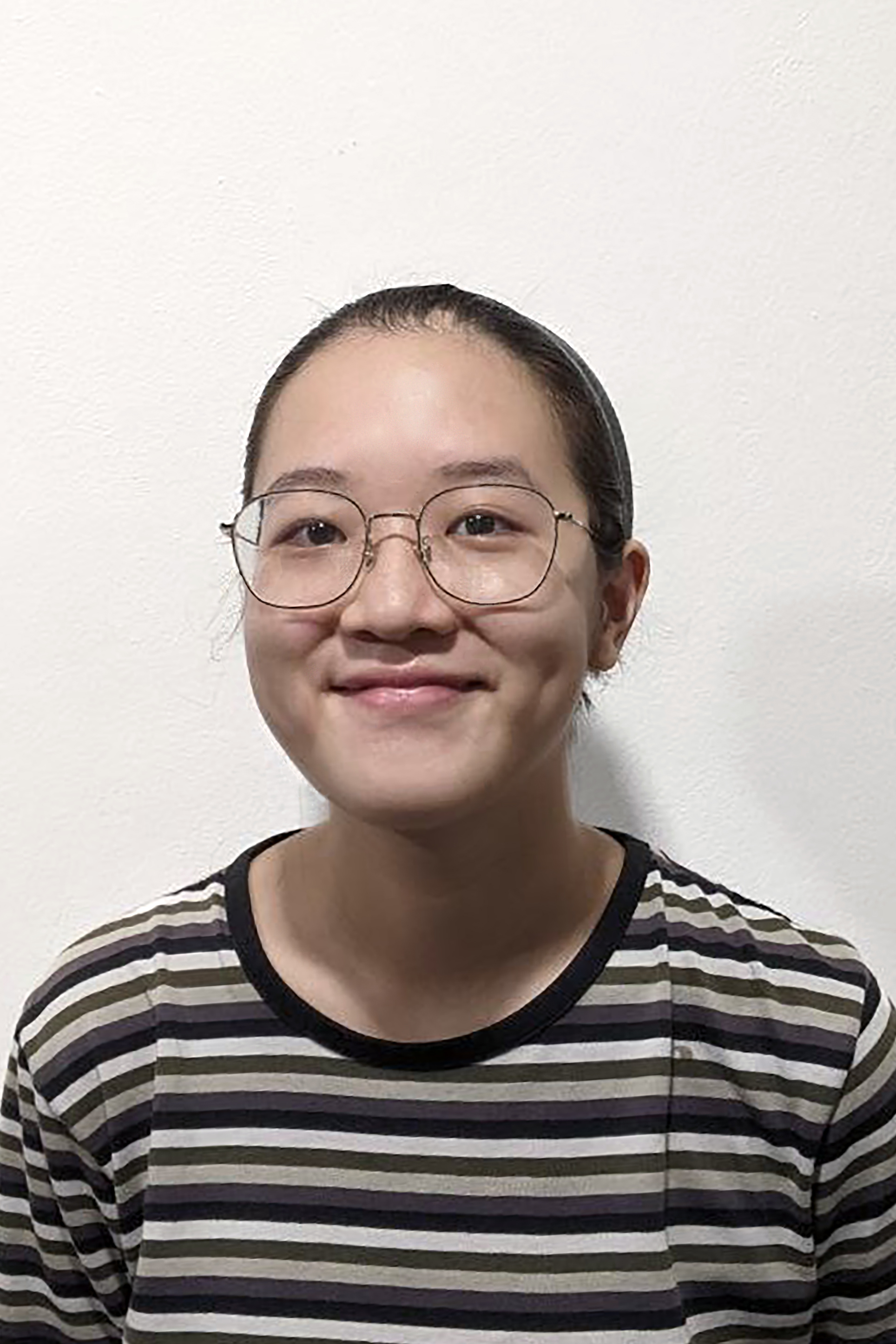
Biography

